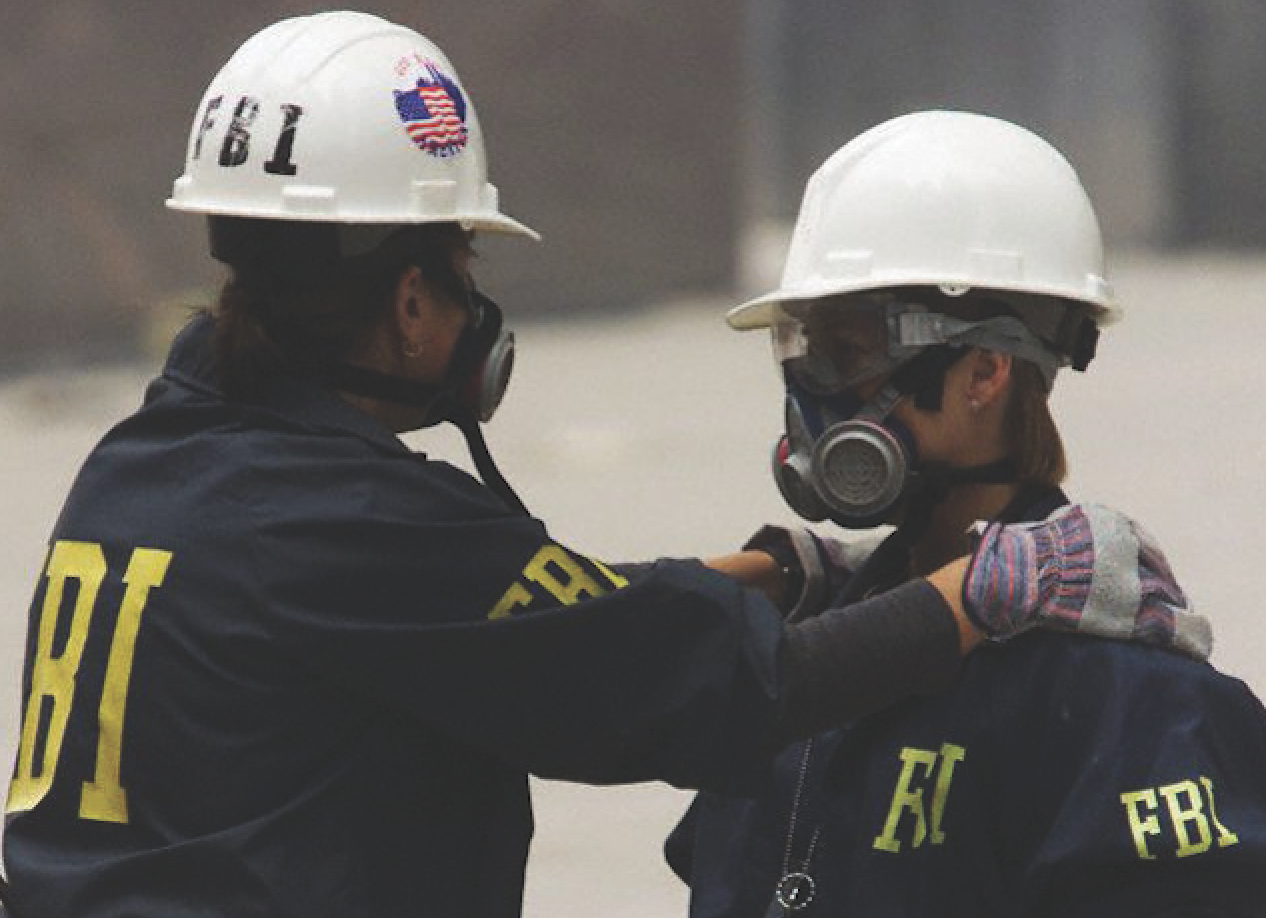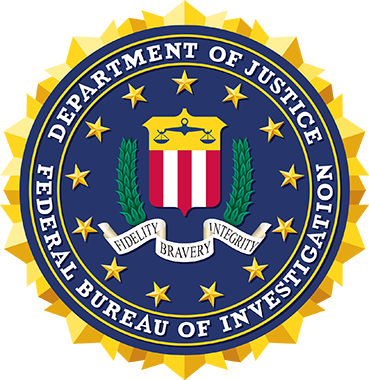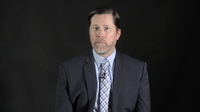9/11 Investigation
They were the most lethal terrorist attacks in history, taking the lives of nearly 3,000 Americans and international citizens and ultimately leading to far-reaching changes in anti-terror approaches and operations in the U.S. and around the globe.
Our investigation of the attacks of 9/11—code-named “PENTTBOM,” short for Pennsylvania, Pentagon, and Twin Towers Bombing—was our largest case ever. At its peak, more than half our agents worked to identify the hijackers and their sponsors and, with other agencies, to head off any possible future attacks. We followed more than half-a-million investigative leads, including several hundred thousand tips from the public. The attack and crash sites also represented the largest crime scenes in FBI history.
The events of 9/11 are forever etched in the minds of anyone old enough to remember the day. Those who were on the East Coast recall that it was a brilliant, clear morning. Then, at 8:46 a.m., American Airlines Flight 11 crashed into the North Tower of the World Trade Center in New York City.
In a meticulously planned attack, terrorists hijacked four airliners. They flew three of the planes into buildings: the twin towers of the World Trade Center in New York and the Pentagon in Arlington, Virginia. They crashed the fourth plane in rural Pennsylvania. The attacks killed 2,976 people and injured thousands more. Today, many first responders are still dealing with adverse health effects from working in toxic conditions.
Immediately after the attacks, the FBI’s top job was to identify the attackers and prevent another incident. Experts in terrorism, evidence collection, and other specialties worked feverishly to determine what had happened and who was responsible.
The FBI also coordinated with its partners in law enforcement and the intelligence community domestically and abroad as it launched its most ambitious investigation ever.
Within minutes, officials at FBI Headquarters in Washington, D.C., activated the Strategic Information and Operations Center. By the end of the day, the FBI had established command posts for each of the three crash sites.
Thousands of agents interviewed witnesses and sources. They tracked down clues and tips worldwide to determine what had happened, who did it, and how future acts could be prevented. The FBI started identifying the 19 terrorists within hours.
Then-FBI Director Robert S. Mueller, III broke with routine and based the massive investigation out of FBI Headquarters instead of a field office. The PENTTBOM Team coordinated the investigation out of a basement office, where dozens of agents would build a case against those responsible.
The case, which remains open, revealed extraordinary acts of courage and selflessness among the spectrum of responders. And it forever changed the way the FBI works with law enforcement and intelligence community partners to keep Americans safe in the U.S. and abroad.

Two FBI agents at the World Trade Center in New York on September 16, 2001. Reuters photo.

Washington Field Office Evidence Response Team members at the Pentagon shortly after the attack.

Recovery efforts at site of Flight 93 crash in Shanksville, Pennsylvania.

By the Numbers
More than 4,000 special agents and 3,000 professional employees helped in the recovery and subsequent investigation of the 9/11 attacks, which challenged the FBI to deploy its assets efficiently and in innovative ways. All FBI Headquarters divisions, field offices, and nearly every unit at the FBI Laboratory contributed. Among the efforts:
- In New York, more than 1,000 FBI employees from 55 of the 56 field offices worked to recover victims, evidence, and personal belongings.
- At the Pentagon, 155 FBI employees from eight field offices recovered evidence.
- In Pennsylvania, 152 FBI employees from eight field offices recovered evidence.
- Special agents and personnel in at least 30 of the FBI’s foreign offices tracked down leads and worked with international partners.
- The FBI responded to more than 500,000 investigative leads.
- Special agents conducted more than 167,000 interviews.
- The FBI collected and processed more than 150,000 pieces of evidence.
- Photographers took more than 170,000 pictures.
- Computer experts examined more than 35 terabytes of data in the first 30 days of the investigation alone.
- More than 70 agents and professional staff worked on the core investigative team.
- Scores of FBI Laboratory personnel helped identify victims and hijackers through DNA.
- Dozens of document experts reviewed more than 1,600 small or damaged pieces of paper.
- Dozens of fingerprint examiners received more than 3,800 pieces of evidence and conducted more than 126,600 comparisons.
- Five FBI cadaver dogs worked at the Pentagon.
- Highly skilled FBI artists developed models of the sites and produced dozens of graphics.
- Hazardous materials specialists from numerous field offices worked the three sites.
- Explosives experts examined plane wreckage and building debris for evidence of bombs.
- FBI pilots transported teams, equipment, and specialists to different locations.
- Technical specialists restored the New York Field Office’s computer and phone systems and provided emergency communication systems in Virginia and Pennsylvania.
- FBI SWAT teams provided security at all three sites, and Hostage Rescue Teams evaluated security at several locations.
- Specialists helped recover audio and data from cockpit voice and flight data recorders and analyzed other audio and video recordings.
- The FBI’s Office for Victim Assistance (now the Victim Services Division) was created to serve thousands of victims and their families.
The Terrorists
The 19 men who hijacked and crashed the four planes were all trained by al Qaeda. Three of the suspected pilots—Mohamed Atta, Marwan Al-Shehhi, and Ziad Jarrah—were part of an al Qaeda cell based in Hamburg, Germany. All four pilots took flying lessons in the United States.
Fifteen of the hijackers came from Saudi Arabia, two from the United Arab Emirates, one from Egypt, and one from Lebanon. The oldest was 33; the rest were between 20 and 29. The group also included two sets of brothers: Wail and Waleed Al-Shehri on American Flight 11, and Nawaf and Salem Al-Hazmi on American Flight 77.
The hijackers began entering the United States in January 2000 to advance the plot. All 19 were in the country by early July 2001.

The Victims
Nearly 3,000 people died on 9/11. A 2-year-old girl on Flight 175 died with her parents on their way to Disneyland. An 85-year-old man on Flight 11 died alongside his wife on their way to her son’s wedding. Eight children died, including three 11-year-olds on Flight 77 taking a school trip. Three college students died on Flight 93.
The victims lived in New York, Washington, D.C., and 27 states. One financial services firm lost 658 employees. The U.S. Army lost 75 men and women. More than 400 first responders, including 60 law enforcement officers, were killed. Nearly 3,000 children lost a parent. The FBI family lost two members that day: Special Agent Lenny Hatton was assisting firefighters was inside the World Trade Center when the buildings collapsed. Former Special Agent John O’Neill was also killed in the collapse.
Today, FBI Director Wray requires new special agents and intelligence analysts to visit the National September 11 Memorial & Museum to remind them of their role to protect the American people and to remember the sacrifices of their brothers and sisters who rose to the occasion and responded on 9/11.
“When you have tough days—and I guarantee you, you will have tough days—remember this day and let it bring you back to the core of your job,” Wray tells new agents and analysts. “The stakes of the work we do. The people we do the work with. The people we do the work for. If you always keep those things front and center you’ll have an incredibly rewarding career at the Bureau and you’ll leave the organization even better than when you found it. And our country will be better for it, too.”
Reference Materials
- Ten Years After: The FBI Since 9/11
- 9/11 Attacks Investigation and Related Materials in the FBI Records Vault
- September 11th Commission Report in the FBI Records Vault
- Press Release of September 27, 2001 with photographs of the 19 hijackers
- Zacarias Moussaoui: In April 2005, Moussaoui pled guilty to six charges against him related to his participation in the 9/11 conspiracy. In May 2006, he was sentenced to life in prison. Director Mueller’s Statement on the Indictment on December 11, 2001 | Indictment
- FBI Agent Lenny Hatton—who died in the 9/11 attacks—was presented the heroes medal of valor. Former FBI Special Agent in Charge John P. O’Neill also lost his life in the attacks.
- For many more pictures, videos, and audio clips related to 9/11, visit our Multimedia website.
Listing
-
Remembering 9/11: Portland FBI Special Agent Brendan
On the 20th anniversary of the 9/11 attacks, Portland FBI Special Agent Brendan describes how he responded to events. "All I knew is I wanted to be down there and try to help."
-
Remembering 9/11: Portland FBI Linguist Patrick
On the 20th anniversary of the 9/11 attacks, Portland FBI linguist Patrick describes how he responded to events.
-
Remembering 9/11: Portland FBI Special Agent Damian
On the 20th anniversary of the 9/11 attacks, Portland FBI Special Agent Damian describes how he responded to events. At the time he was on the SWAT team at the Washington Field Office.
-
Remembering 9/11: Portland FBI Special Agent in Charge
On the 20th anniversary of the 9/11 attacks, Kieran Ramsey, special agent in charge of the Portland Field Office, describes responding after the attacks. He was a young agent assigned to the Seattle Field Office, having only been in the FBI for just under three years at that time.
-
FBI Pittsburgh Chaplain Recalls His Role After 9/11
FBI Pittsburgh Chaplain Father Joseph McCaffrey describes how he responded in the days and weeks after 9/11.
-
FBI Plea for 9/11 Responders to Register for Health Benefits (Social Media Version)
FBI personnel who responded following the 9/11 attacks encourage other 9/11 responders—including thousands within the Bureau—to sign up for health benefits to ensure everyone who worked the expansive crime scenes in New York, Virginia, and Pennsylvania is plugged into the health resources available to them.
-
Lori's Story: 9/11 Victim's Sister Recalls 'Very Reverent Moment'
Lori Guadagno recounts when the FBI returned personal effects belonging to her late brother Richard, who was aboard United Airlines Flight 93 when it crashed in Shanksville, Pennsylvania, on September 11, 2001.
-
9/11 Memorial at Terrorist Screening Center
A time-lapse of the 9/11 Memorial at the Terrorist Screening Center. Its shadows fall on the markers only once a year, on September 11th.
-
FBI Plea for 9/11 Responders to Register for Health Benefits
FBI personnel who responded following the 9/11 attacks encourage other 9/11 responders—including thousands within the Bureau—to sign up for health benefits to ensure everyone who worked the expansive crime scenes in New York, Virginia, and Pennsylvania is plugged into the health resources available to them.
-
Their Voices: Remembering 9/11
New agent trainees from the FBI Academy share their experience visiting the National September 11 Memorial & Museum in New York City on March 9, 2019.
-
FBI Agents and Analysts Tour 9/11 Memorial & Museum
FBI Director Christopher Wray describes why he has added a training requirement for new agents and intelligence analysts to visit the National September 11 Memorial & Museum in New York City.
-
Investigation of United Flight 93
After planes crashed in New York and Washington, D.C. on September 11, 2001, employees at the FBI’s Pittsburgh office weren’t sure where to respond. Then news came of a fourth plane—United Flight 93—heading their way.
-
Special Agent S.M. worked on an organized crime squad in the New York Division and was a member of the SWAT team when the attacks occurred on the World Trade Center.
-
Special Agent A.B. was assigned to the Laurel Highlands Resident Agency in Johnstown, Pa., when terrorists crashed a plane near Shanksville on September 11, 2001. He was one of the first FBI responders to the scene, and later worked at the temporary morgue with the county coroner.
-
Special Agent B.C. was the media rep for the Pittsburgh Division and worked with the media immediately after terrorists crashed a plane near Shanksville, Pa., on September 11, 2001. He was on site beginning the day after the event, and stayed until the FBI turned the scene over to the county coroner.
-
Special Agent H.S. was a member of New York’s Joint Terrorism Task Force and responded to the terrorist attacks on the World Trade Centers. He was on-scene when both towers collapsed. He had just returned from Yemen, where he was doing work on the USS Cole investigation. He also worked on the PENTTBOM Team tracking phone records.
-
Special Agent J.K. served as the initial press spokesman for the FBI at the crash site after terrorists crashed a plane near Shanksville, Pa.
-
Special Agent J.M. worked at the Bureau’s forensic recovery operations at Staten Island, N.Y., after the attack on New York City on September 11, 2001. She also worked at the Command Post near Ground Zero until it closed at the end of May 2002.
-
Special Agent J.P., assigned to the Washington Field Office Joint Terrorism Task Force, was one of three on-scene commanders at the Pentagon.
-
Special Agent J.S. was a member of an organized crime squad in New York City and responded to the terrorist attacks on the World Trade Centers.
-
Special Agent M.G. led the PENTTBOMB team that investigated the 9/11 attacks. "There isn't a week that goes by that I don’t think about September 11th," she said. "It affects who you are."
-
Retired Special Agent M.S. was one of three supervisory agents from the Pittsburgh Division on the scene after terrorists crashed a plane near Shanksville, Pa., on September 11, 2001. He was in charge of site logistics.
-
Special Agent R.B. was an assistant special agent in charge at the Washington Field Office on September 11, 2001, and was the senior FBI official and the initial on-scene commander at the Pentagon. He established the interagency Joint Operations Center and coordinated the FBI’s rescue, recovery, and evidence collection process.
-
Special Agent S.R. was the Evidence Response Team coordinator for the New York Division and started the process for collecting evidence at the World Trade Center site after the attacks of September 11, 2001.
-
Special Agent S.S. was a member of New York’s Joint Terrorism Task Force. She worked briefly at the forensic recovery operations at Staten Island, N.Y., and near the World Trade Center site after the attack on New York City on September 11, 2001.
-
Special Agent T.O., a member of the Evidence Response Team from the Washington Field Office, was in charge of collecting evidence on the night shift at the Pentagon after the terrorist attacks of September 11, 2001.
-
-
Special Agent W.J. was working out of the Brooklyn-Queens Residence Agency but was in the city for an interview the morning of September 11. He was working on an organized crime squad at the time. He was nearly killed in the collapse of the North Tower.
-
Retired Special Agent W.M. was the supervisory senior resident agent at the Mon Valley Resident Agency in Pennsylvania. The RA at the time included Shanksville in Somerset County, where terrorists crashed a plane on September 11, 2001.
-
Special Agent C.C. was the Assistant WMD Coordinator on the National Capital Response Squad out of the Washington Field Office at the time. He set up the first FBI command post at the Pentagon and was the first on-scene commander.
-
Special Agent D.H. was a member of the Pittsburgh Division’s Evidence Response Team and responded to the crash of United Airlines Flight 93 near Shanksville, Pa. He was one of the first FBI agents on the scene. He worked as a liaison with the mining engineers who handled the heavy excavation equipment at the site.
-
Special Agent J.P. worked in the morgue with the chief medical examiner of New York, helping to identify victims and their personal effects. She has an extensive background in international terrorism and was a member of New York’s ERT.
-
Special Agent P.M. was in charge of site security at the crime scene near Shanksville, Pennsylvania after terrorists crashed a plane there on September 11, 2001.
-
Special Agent A.B. worked near Ground Zero after the September 11, 2001 attacks on the World Trade Center, and served as the liaison between the FBI and the New York City Mayor’s office on victims’ issues.
-
Special Agent J.A. was working on a Truck Hijacking Squad in Brooklyn-Queens and was attending a meeting for hostage negotiators in New York City on September 11, and led the investigation of two suspected co-conspirators in the weeks that followed.
-
Special Agent J.D. was the acting assistant special agent in charge for the Drug Branch in the New York Division on September 11, 2001. As a top executive, he was a critical element in coordinating the FBI’s on-scene response to the attack on the World Trade Center and the initial investigation.
1 - 36 of 36 Results








































